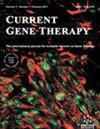Dissecting the Mechanisms of Intestinal Immune Homeostasis by Analyzing T-Cell Immune Response in Crohn's Disease and Colorectal Cancer
IF 3.8
4区 医学
Q2 GENETICS & HEREDITY
引用次数: 0
Abstract
Introduction: Crohn's disease (CD) and colorectal cancer (CRC) represent a group of intestinal disorders characterized by intricate pathogenic mechanisms linked to the disruption of intestinal immune homeostasis. Therefore, comprehending the immune response mechanisms in both categories of intestinal disorders is of paramount significance in the prevention and treatment of these debilitating intestinal ailments. Method: In this study, we conducted single-cell analysis on paired samples obtained from primary colorectal tumors and individuals with Crohn's disease, which was aimed at deciphering the factors influencing the composition of the intestinal immune microenvironment. By aligning T cells across different tissues, we identified various T cell subtypes, such as γδ T cell, NK T cell, and regulatory T (Treg) cell, which maintained immune system homeostasis and were confirmed in enrichment analyses. Subsequently, we generated pseudo-time trajectories for subclusters of T cells in both syndromes to delineate their differentiation patterns and identify key driver genes. Result: Furthermore, cellular communication and transcription factor regulatory networks are all essential components of the intricate web of mechanisms that regulate intestinal immune homeostasis. The identified complex cellular interaction suggested potential T-lineage immunotherapeutic targets against epithelial cells with high copy number variation (CNV) levels in CD and CRC. Conclusion: Finally, the analysis of regulon networks revealed several promising candidates for cell-specific transcription factors (TFs). This study focused on the immune molecular mechanism under intestinal diseases. It contributed to the novel insight of depicting a detailed immune landscape and revealing T-cell responding mechanisms in CD and CRC.通过分析克罗恩病和结肠直肠癌中的 T 细胞免疫反应剖析肠道免疫平衡机制
导言:克罗恩病(CD)和结肠直肠癌(CRC)是一类肠道疾病,其特点是错综复杂的致病机制与肠道免疫平衡的破坏有关。因此,了解这两类肠道疾病的免疫反应机制对于预防和治疗这些使人衰弱的肠道疾病具有重要意义。研究方法在这项研究中,我们对原发性结直肠肿瘤和克罗恩病患者的配对样本进行了单细胞分析,旨在破译影响肠道免疫微环境组成的因素。通过对不同组织的T细胞进行比对,我们发现了各种T细胞亚型,如γδ T细胞、NK T细胞和调节性T(Treg)细胞,它们维持着免疫系统的平衡,并在富集分析中得到了证实。随后,我们为这两种综合征中的T细胞亚群生成了伪时间轨迹,以描述它们的分化模式并确定关键驱动基因。结果此外,细胞通讯和转录因子调控网络都是调节肠道免疫平衡的复杂机制网络的重要组成部分。已确定的复杂细胞相互作用为针对 CD 和 CRC 中具有高拷贝数变异 (CNV) 水平的上皮细胞的 T 线免疫治疗提供了潜在靶点。结论最后,对调控子网络的分析发现了几个有希望的候选细胞特异性转录因子(TFs)。这项研究的重点是肠道疾病的免疫分子机制。该研究为描绘CD和CRC的详细免疫图谱和揭示T细胞应答机制提供了新的视角。
本文章由计算机程序翻译,如有差异,请以英文原文为准。
求助全文
约1分钟内获得全文
求助全文
来源期刊

Current gene therapy
医学-遗传学
CiteScore
6.70
自引率
2.80%
发文量
46
期刊介绍:
Current Gene Therapy is a bi-monthly peer-reviewed journal aimed at academic and industrial scientists with an interest in major topics concerning basic research and clinical applications of gene and cell therapy of diseases. Cell therapy manuscripts can also include application in diseases when cells have been genetically modified. Current Gene Therapy publishes full-length/mini reviews and original research on the latest developments in gene transfer and gene expression analysis, vector development, cellular genetic engineering, animal models and human clinical applications of gene and cell therapy for the treatment of diseases.
Current Gene Therapy publishes reviews and original research containing experimental data on gene and cell therapy. The journal also includes manuscripts on technological advances, ethical and regulatory considerations of gene and cell therapy. Reviews should provide the reader with a comprehensive assessment of any area of experimental biology applied to molecular medicine that is not only of significance within a particular field of gene therapy and cell therapy but also of interest to investigators in other fields. Authors are encouraged to provide their own assessment and vision for future advances. Reviews are also welcome on late breaking discoveries on which substantial literature has not yet been amassed. Such reviews provide a forum for sharply focused topics of recent experimental investigations in gene therapy primarily to make these results accessible to both clinical and basic researchers. Manuscripts containing experimental data should be original data, not previously published.
 求助内容:
求助内容: 应助结果提醒方式:
应助结果提醒方式:


